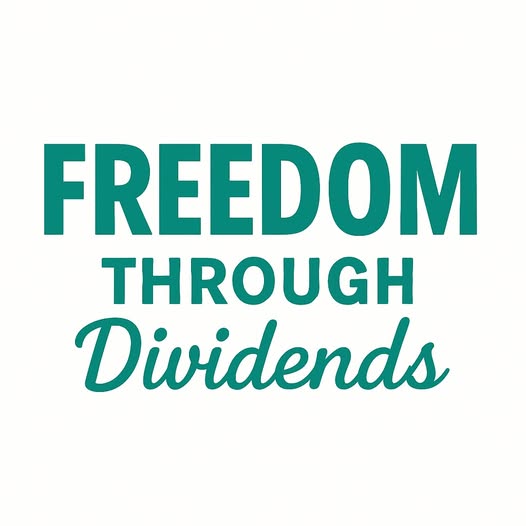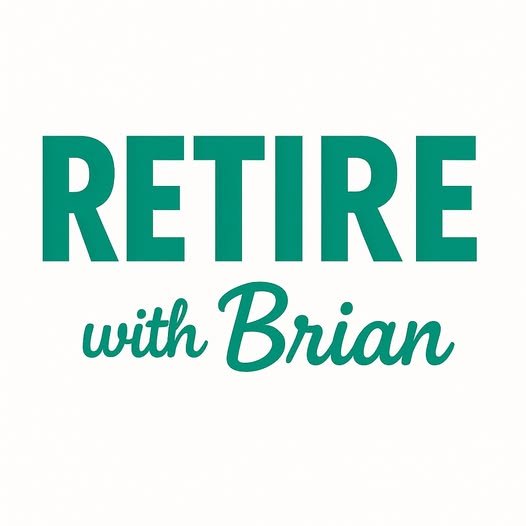Are you looking for a reliable way to make a steady income stream in today’s unpredictable market?
Investing in income-generating ETFs might be a good choice. ETFs, or Exchange-Traded Funds, offer a mix of investments. This mix can help lower risk and provide regular income. By picking ETFs that focus on income, you can get a steady return.
ETFs are flexible and diverse, making them a great choice for a steady income.
Key Takeaways
- ETFs can provide a diversified income stream.
- Income-generating ETFs are designed to reduce risk.
- They offer flexibility in investment strategies.
- Regular income can be achieved through dividend-paying ETFs.
- ETFs are traded on an exchange like stocks, offering liquidity.
Understanding Income-Generating ETFs
Investors looking for a steady income often choose income-focused exchange-traded funds. These funds offer regular income from a diverse portfolio. They are great for balancing risk and reward.
What Makes ETFs Suitable for Income Generation
Diversified income ETFs are perfect for generating income. They spread investments across many assets, reducing risk. This diversification leads to a more stable income. Plus, ETFs are flexible and transparent, helping investors make smart choices.
Types of Income ETFs Available to Investors
There are many income ETFs for different strategies and risk levels. The main types are:
- Dividend ETFs
- Bond ETFs
- Real Estate ETFs
- Preferred Stock ETFs
| Type of ETF | Investment Focus | Income Generation Potential |
|---|---|---|
| Dividend ETFs | Stocks with high dividend yields | Regular dividend income |
| Bond ETFs | Government and corporate bonds | Interest income |
| Real Estate ETFs | Real estate investment trusts (REITs) | Rental income and property appreciation |
| Preferred Stock ETFs | Preferred stocks with fixed dividend rates | Regular dividend income with lower volatility |
The Benefits of Using ETFs for a Steady Income Stream
For those looking to earn regular income, ETFs are a great choice. They offer a diversified portfolio, which is key for managing risk.
Diversification Advantages
ETFs mix funds into different assets like stocks, bonds, or real estate. This mix helps lower risk and boost potential earnings. By investing in one ETF, you get to see many securities’ performance, which is more efficient than buying each one separately.
Diversification Benefits:
| Benefit | Description |
|---|---|
| Risk Reduction | Spreads investment across various assets to minimize risk. |
| Increased Potential Returns | By investing in a mix of assets, you may see more stable returns over time. |
| Efficient Investment | Provides broad market exposure with a single investment. |
Lower Expense Ratios Compared to Mutual Funds
ETFs have lower costs than mutual funds. This is because they are passively managed, needing less work and lower fees. So, you keep more of your investment earnings.
Tax Efficiency Considerations
ETFs are often more tax-friendly than mutual funds. They have lower turnover and don’t sell securities to meet redemptions, avoiding capital gains taxes. This makes them a good pick for those watching their taxes, looking for stable income ETFs.
Knowing these benefits helps you choose ETFs wisely for a steady income. You might find the best ETFs for consistent yield this way.
Key Categories of Income-Focused ETFs

Income-focused ETFs come in several types, each with its own benefits. They help investors get regular income. Knowing these categories is key to making smart investment choices that meet your financial goals.
Dividend ETFs
Dividend ETFs focus on stocks that pay out dividends. This makes them great for those looking for high-yield returns. They can be split into high-yield and dividend growth ETFs, each suited for different strategies.
Bond ETFs
Bond ETFs hold a mix of bonds, offering steady income through interest. They vary by bond type, like government bonds, corporate bonds, or international bonds. Bond ETFs are known for their regular income and lower risk.
Real Estate ETFs
Real Estate ETFs let investors tap into the real estate market without owning physical properties. They invest in Real Estate Investment Trusts (REITs), providing income from rentals and property growth. They’re good for those looking to diversify and earn income.
Preferred Stock ETFs
Preferred Stock ETFs invest in preferred stocks, blending stock and bond features. They have a higher claim on assets and earnings than common stocks. This makes them appealing for income. Preferred Stock ETFs offer a stable income stream with less volatility than common stock ETFs.
In summary, income-focused ETFs come in various types, each with its own benefits. By understanding these, you can make better choices for your investment portfolio.
Top Dividend ETFs for Reliable Income
Looking for a steady income? Top dividend ETFs are a smart choice. They offer a mix of stocks that pay dividends, giving you a regular income. This is especially good when interest rates are low.
High-Yield Dividend ETFs
High-yield dividend ETFs pick stocks with higher dividend yields. They’re great for those who want more income and are okay with a bit more risk. Here are two top picks:
Vanguard High Dividend Yield ETF (VYM)
The Vanguard High Dividend Yield ETF follows the FTSE High Dividend Yield Index. It covers a wide range of high-yielding US stocks. With a low cost of 0.06%, it’s known for its diverse portfolio and steady dividends.
SPDR Portfolio S&P 500 High Dividend ETF (SPYD)
The SPDR Portfolio S&P 500 High Dividend ETF focuses on high-dividend stocks in the S&P 500. It has a diverse portfolio and a low cost of 0.07%. It’s perfect for those seeking income from big US companies.
Dividend Growth ETFs
Dividend growth ETFs invest in companies that raise their dividends over time. They’re good for those who want income and the chance for their money to grow. Here are two top choices:
Vanguard Dividend Appreciation ETF (VIG)
The Vanguard Dividend Appreciation ETF tracks the Nasdaq US Dividend Achievers Index. It focuses on US companies with a history of raising their dividends. With a cost of 0.08%, it’s a smart choice for long-term investors.
ProShares S&P 500 Dividend Aristocrats ETF (NOBL)
The ProShares S&P 500 Dividend Aristocrats ETF targets S&P 500 companies with 20+ years of dividend growth. It offers a mix of income and stability. With a cost of 0.35%, it’s a unique option.
International Dividend ETFs
International dividend ETFs give you access to dividend stocks outside the US. They offer diversification and potentially higher yields. Here are two notable ones:
Vanguard International High Dividend Yield ETF (VYMI)
The Vanguard International High Dividend Yield ETF tracks the FTSE Developed High Dividend Yield Index, excluding the US. It has a diverse portfolio of high-yielding international stocks. With a cost of 0.22%, it’s a good choice.
iShares International Select Dividend ETF (IDV)
The iShares International Select Dividend ETF focuses on dividend stocks in developed international markets. It aims to provide a steady income with a cost of 0.45%.
Bond ETFs for Income Stability
For those seeking stable income, bond ETFs are a great choice. They let you invest in a mix of bonds, providing regular income. This mix can reduce the risk of individual bonds.
Treasury Bond ETFs
Treasury bond ETFs focus on government securities, offering a safe investment. They are backed by the U.S. government, making them very secure.
iShares 20+ Year Treasury Bond ETF (TLT)
The iShares 20+ Year Treasury Bond ETF (TLT) deals with long-term Treasury bonds. It’s good for those wanting to protect against interest rate changes.
Corporate Bond ETFs
Corporate bond ETFs invest in corporate debt, offering higher yields than Treasuries. But, they carry more credit risk.
Vanguard Intermediate-Term Corporate Bond ETF (VCIT)
The Vanguard Intermediate-Term Corporate Bond ETF (VCIT) focuses on high-quality corporate bonds. It aims to balance yield and risk.
Municipal Bond ETFs
Municipal bond ETFs invest in state and local government bonds. They offer tax-free income, which helps those in higher tax brackets.
iShares National Muni Bond ETF (MUB)
The iShares National Muni Bond ETF (MUB) covers the municipal bond market. It invests in a variety of tax-free bonds.
International Bond ETFs
International bond ETFs invest in bonds from outside the U.S. They offer diversification and potentially higher yields. But, they also come with currency and geopolitical risks.
Vanguard Total International Bond ETF (BNDX)
The Vanguard Total International Bond ETF (BNDX) invests in a wide range of international bonds. It provides global diversification and helps against domestic market swings.
| ETF Type | Example ETF | Investment Focus |
|---|---|---|
| Treasury Bond ETFs | iShares 20+ Year Treasury Bond ETF (TLT) | Long-term U.S. Treasury bonds |
| Corporate Bond ETFs | Vanguard Intermediate-Term Corporate Bond ETF (VCIT) | Investment-grade corporate bonds |
| Municipal Bond ETFs | iShares National Muni Bond ETF (MUB) | Tax-exempt municipal bonds |
| International Bond ETFs | Vanguard Total International Bond ETF (BNDX) | International bonds |
Adding bond ETFs to your portfolio can help stabilize your income. Each type of bond ETF has its own benefits and risks. This lets you customize your investments to fit your financial goals and risk level.
Real Estate and Infrastructure ETFs for Income

Investors looking to diversify their income can consider real estate and infrastructure ETFs. These options tap into sectors like real estate and infrastructure. They can potentially offer steady income.
REIT ETFs
REIT ETFs let you invest in a mix of real estate trusts. They cover different property types, like homes, offices, and factories.
Vanguard Real Estate ETF (VNQ)
The Vanguard Real Estate ETF is a big name in REIT ETFs. It gives you a wide view of the U.S. real estate market.
Schwab US REIT ETF (SCHH)
The Schwab US REIT ETF offers cheap access to U.S. REITs. It’s great for those wanting real estate income.
Infrastructure ETFs
Infrastructure ETFs focus on companies that work on projects like roads, bridges, and utilities.
Global X US Infrastructure Development ETF (PAVE)
The Global X US Infrastructure Development ETF targets companies set to gain from U.S. infrastructure projects.
Global Real Estate Options
For those interested in global markets, there are ETFs for international real estate.
Vanguard Global ex-U.S. Real Estate ETF (VNQI)
The Vanguard Global ex-U.S. Real Estate ETF gives you a wide range of international real estate. It excludes the U.S.
| ETF | Focus | Expense Ratio |
|---|---|---|
| Vanguard Real Estate ETF (VNQ) | U.S. REITs | 0.12% |
| Schwab US REIT ETF (SCHH) | U.S. REITs | 0.07% |
| Global X US Infrastructure Development ETF (PAVE) | U.S. Infrastructure | 0.47% |
| Vanguard Global ex-U.S. Real Estate ETF (VNQI) | International REITs | 0.12% |
Building Your ETF Income Portfolio
To create a reliable income portfolio with ETFs, you need a plan. First, understand your income needs. Then, balance growth and income. Finally, use smart asset allocation strategies.
Step1: Determining Your Income Needs
Knowing your income needs is key. You must figure out the yield you need from your investments. This will help you meet your financial goals.
Calculating Required Yield
To find your required yield, think about your annual expenses and income needs. For example, if you need $40,000 a year and have $1 million invested, you need a 4% yield.
Setting Realistic Expectations
It’s important to have realistic expectations. Look at market conditions and the ETFs you’re investing in. High-yield ETFs might offer more returns but also come with more risks.
Step2: Balancing Growth and Income
It’s crucial to balance growth and income for a sustainable portfolio. Your strategy will depend on your age, retirement status, and how much risk you can take.
Age-Based Allocation Models
Younger investors might put more into growth-oriented ETFs. Those nearing retirement might focus on income-generating ETFs.
Retirement vs. Pre-Retirement Strategies
If you’re close to retirement, you might focus on income stability. Before retirement, you might aim for growth to build your nest egg.
Step3: Asset Allocation Strategies
Effective asset allocation is crucial for a successful ETF income portfolio. Two popular strategies are the core-satellite approach and the bucket strategy.
Core-Satellite Approach
This strategy involves a core of diversified ETFs and satellite investments in specific sectors or niches.
Bucket Strategy Implementation
The bucket strategy divides your investments into different “buckets” based on liquidity needs and time horizons. This ensures you have funds when you need them.
By following these steps and considering your financial situation, you can build an ETF income portfolio. It will meet your needs and provide a steady income stream. Consider getting advice from a financial advisor to find the best ETFs for consistent yield for you.
Implementing ETFs for a Steady Income Stream
ETFs for income are a smart way to get a steady flow of money. They help you make your investment strategy better and reach your financial goals.
Step1: Setting Up Regular Distributions
To get regular income from ETFs, you need to set up distributions. This means setting up your brokerage account to send out money at times that work for you.
Brokerage Account Settings
Make sure your brokerage account is ready for regular distributions. You might need to pick how often you want money sent out, like every month or quarter.
Distribution Frequency Options
You can pick from different times for distributions, based on your ETF and brokerage. Options include monthly, quarterly, or yearly distributions.
Step2: Reinvestment Strategies
Choosing whether to reinvest or take cash is key. Reinvesting can grow your portfolio, while taking cash gives you money now.
DRIP Programs
Dividend Reinvestment Plans (DRIPs) let you automatically reinvest your distributions. This can increase your returns over time.
Selective Reinvestment Approaches
You can also choose to reinvest in specific ETFs or other investments that fit your goals.
Step3: Tax-Efficient Placement
Putting your ETFs in a tax-smart way can boost your returns. Think about the taxes on your investments and place them wisely.
Account Type Considerations (IRA, 401k, Taxable)
The type of account for your ETFs matters for taxes. Tax-deferred accounts like IRAs and 401(k)s have different benefits than taxable accounts.
Tax-Loss Harvesting Opportunities
Tax-loss harvesting means selling losing investments to get tax benefits. This can lower your tax bill by offsetting gains from other investments.
By following these steps and thinking about your financial situation, you can use income-focused ETFs to get a steady income.
Managing Risks in Income ETF Investing
When you start investing in income ETFs, it’s important to watch out for risks. These investments offer a variety of income sources but come with challenges. Knowing these risks helps you deal with the complexities of income investing.
Interest Rate Risk
One big risk is interest rate risk. When rates go up, the value of bonds in ETFs can drop. This is especially true for bond ETFs.
Duration Management Strategies
To lessen this risk, you can choose ETFs with shorter durations. These are less affected by rate changes. You can also pick ETFs that adjust their duration based on rate changes.
Credit Risk
Credit risk is another big worry, especially for corporate bond ETFs. It’s the chance that a bond issuer won’t pay back. Spreading your investments across different credit levels can help.
Diversification Across Credit Qualities
Investing in a mix of high-grade and high-yield bonds can balance risk and reward. High-grade bonds have lower yields but are safer. High-yield bonds offer more returns but carry more risk.
Inflation Risk
Inflation risk can reduce the value of your ETF income. As prices go up, your fixed income may not keep up, lowering its value.
TIPS ETFs and Inflation Hedges
To fight inflation risk, look into Treasury Inflation-Protected Securities (TIPS) ETFs. These ETFs hold TIPS, which keep pace with inflation, protecting your income’s value.
Market Volatility Considerations
Market ups and downs can also affect your ETFs, especially those with more equity, like dividend ETFs.
Low Volatility ETF Options
For less market volatility, consider low volatility ETFs. These usually invest in stocks or bonds with lower volatility, offering a steadier income during market swings.
By understanding and tackling these risks, you can better manage your income ETF investments. This helps you aim for a stable income stream.
Conclusion: Maintaining Your Income ETF Strategy
Exploring ETFs for income shows the importance of a good plan. Using reliable dividend ETFs can give you a steady income. These ETFs offer diversification, lower costs, and tax benefits, making them great for those seeking income.
To keep your strategy working, check your portfolio often. Make sure it fits your income needs and risk level. Rebalancing when needed helps you handle market changes and reach your financial goals.
By following this guide and staying up-to-date on ETF news, you can manage your portfolio well. This leads to a steady income. Whether you’re experienced or new, a solid income ETF strategy can bring financial stability and success.
FAQ
What are the best ETFs for generating a steady income stream?
The top ETFs for steady income include diversified income ETFs and high-yield ones. Vanguard High Dividend Yield ETF (VYM) and iShares Core S&P U.S. Dividend Aristocrats ETF are good choices.
How do income-focused ETFs work?
Income-focused ETFs pool money to invest in assets like dividend stocks and bonds. They offer a regular income stream to investors.
What are the benefits of using ETFs for income generation?
ETFs offer diversification and lower costs than mutual funds. They are also tax-efficient, making them great for income investors.
What types of income ETFs are available to investors?
Investors can choose from dividend, bond, real estate, and preferred stock ETFs. Each type has its own benefits and characteristics.
How do I build an ETF income portfolio?
First, determine your income needs. Then, balance growth and income. Use strategies like the core-satellite approach or bucket strategy for asset allocation.
What are the risks associated with income ETF investing?
Risks include interest rate, credit, and inflation risks. Strategies like duration management and diversification can help mitigate these risks.
How can I implement ETFs for a steady income stream?
Set up regular distributions and consider reinvestment strategies. Optimize tax-efficient placement and account type considerations. Also, use tax-loss harvesting opportunities.
What are some top dividend ETFs for reliable income?
Top dividend ETFs include Vanguard Dividend Appreciation ETF (VIG) and ProShares S&P 500 Dividend Aristocrats ETF (NOBL). iShares International Select Dividend ETF (IDV) is also a good choice.
How do bond ETFs provide income stability?
Bond ETFs invest in bonds, offering regular interest payments. They often have lower volatility than equity ETFs, providing income stability.

